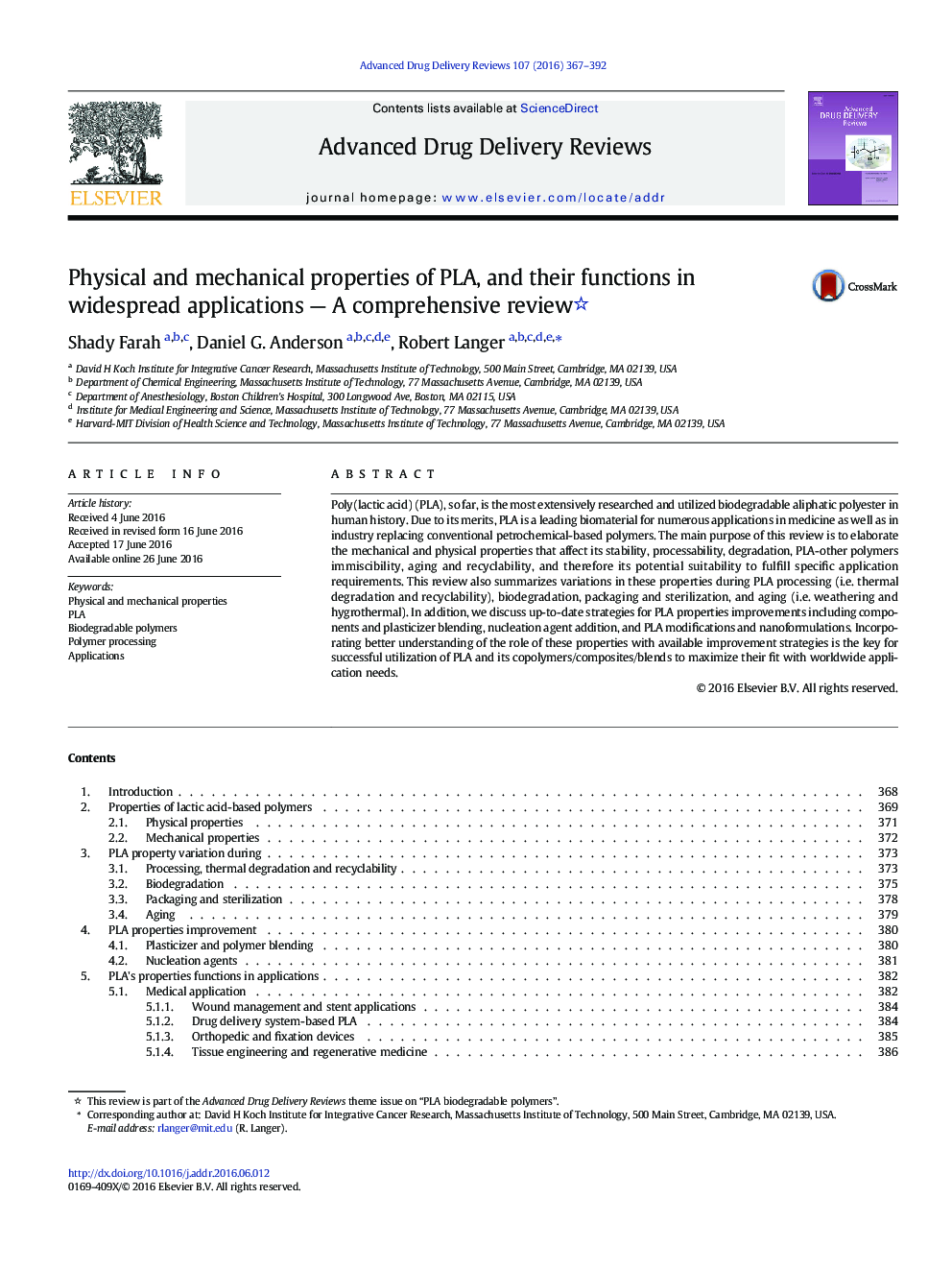| Article ID | Journal | Published Year | Pages | File Type |
|---|---|---|---|---|
| 5520072 | Advanced Drug Delivery Reviews | 2016 | 26 Pages |
Poly(lactic acid) (PLA), so far, is the most extensively researched and utilized biodegradable aliphatic polyester in human history. Due to its merits, PLA is a leading biomaterial for numerous applications in medicine as well as in industry replacing conventional petrochemical-based polymers. The main purpose of this review is to elaborate the mechanical and physical properties that affect its stability, processability, degradation, PLA-other polymers immiscibility, aging and recyclability, and therefore its potential suitability to fulfill specific application requirements. This review also summarizes variations in these properties during PLA processing (i.e. thermal degradation and recyclability), biodegradation, packaging and sterilization, and aging (i.e. weathering and hygrothermal). In addition, we discuss up-to-date strategies for PLA properties improvements including components and plasticizer blending, nucleation agent addition, and PLA modifications and nanoformulations. Incorporating better understanding of the role of these properties with available improvement strategies is the key for successful utilization of PLA and its copolymers/composites/blends to maximize their fit with worldwide application needs.
Graphical abstractDownload high-res image (208KB)Download full-size image
